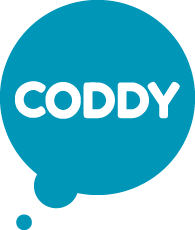Picture this: HR Manager Sarah spends 3 hours daily on routine tasks—processing vacation requests, entering new employee data, and generating standard reports. Meanwhile, Alex, an HR specialist at a neighboring company, uses that same time for two strategic meetings, key employee conversations, and developing a new talent program. The difference? HR process automation.
This article doesn't just explain HR automation—we'll show you real examples of transitioning from "drowning in paperwork" to "having time for what truly matters." Ready to explore modern HR? Let's dive in!

The Reality of Manual HR Operations
HR automation means software handles routine tasks instead of humans. But it's not just installing some program—it's completely rethinking how your HR department operates.
Before: Anna from HR manually cross-references timesheets, calculates vacation and sick pay, then passes paper documents to accounting.
After: The system automatically collects time data, calculates payments, generates reports, and Anna focuses on developing corporate culture and working with talent.
According to McKinsey research, HR specialists spend up to 70% of their time on administrative tasks. Imagine reclaiming most of that time! That's exactly what HR automation delivers.
Why HR Automation is Business Critical
In 2025, a company without HR automation is like a smartphone without internet: technically functional, but missing most capabilities. Let's examine real-life examples:
Failure Story: How Manual HR Kills Business
TraditionalSoft Company prided itself on "personal approach" to HR processes. Recruiters manually reviewed every resume, HR specialists personally filled all documentation for newcomers, and performance evaluations used paper forms.
Results after one year:
- Average position closure time: 63 days (vs. market average of 35)
- Staff turnover reached 42% (double the industry average)
- Payroll errors occurred in 8% of cases
- HR department grew to 12 people for a 150-employee company
The company lost several key clients due to understaffing and eventually surrendered significant market share to competitors.
Success Story: How HR Automation Saved Business
NeoTech Company faced similar challenges but chose a different path. They implemented comprehensive HR automation in just 3 months.
Results after one year:
- Average position closure time reduced to 24 days
- Staff turnover decreased to 15%
- Calculation errors virtually eliminated (less than 0.5%)
- HR department optimized to 5 specialists for 180 employees
The company redirected freed resources to employee development and strong corporate culture creation, leading to 22% productivity growth.

Top 5 HR Processes to Automate Now
1. Recruitment Automation: From Eternity to Job Offer in a Few Clicks
Problem: Recruiters drowning in resumes, candidates waiting weeks for responses, managers complaining about hiring quality.
Solution: Applicant Tracking Systems (ATS)
Implementation Examples:
Best Practice: CyberSystems company configured their ATS so that:
- Job postings automatically publish to 15+ platforms
- AI conducts initial resume screening using 20+ parameters
- Chatbots ask selected candidates basic questions
- System schedules interviews, syncing with interviewer calendars
- Candidates receive automatic status updates
Result: Hiring funnel increased 3x, position closure time reduced by 62%.
Poor Practice: OldApproach company also bought an ATS but:
- Only configured it for job posting
- Continued manually processing all resumes
- Didn't integrate with corporate email and calendars
- Used system as "expensive database"
Result: Money spent but process remained equally inefficient.
CODDY Connection: Our programming courses for teens teach systematic thinking and problem-solving skills that directly transfer to professional recruitment and talent assessment processes.
2. New Employee Onboarding: First Impressions Can't Be Made Twice
Problem: Newcomers spend weeks figuring out their responsibilities, bombard colleagues with questions, and often quit within first 3 months.
Solution: Onboarding automation systems
Implementation Examples:
Best Practice: At DigitalProgress company:
- New employees access portal before first workday
- System automatically generates personalized adaptation plan
- 24/7 chatbot answers standard questions
- Interactive training materials available in convenient format
- System tracks progress and automatically reminds about next steps
Result: 94% of newcomers pass probation, productivity reaches target level 40% faster.
Poor Practice: At FormalApproach company:
- Send newcomers 50-page PDF information file
- Conduct single introductory meeting for all newcomers monthly
- Don't track adaptation progress
- Evaluate results only at probation end
Result: Only 47% of newcomers remain after probation.
3. Performance Management: From Subjective Assessments to Objective Data
Problem: Employee evaluation happens annually, based on subjective opinion, and often perceived as formality.
Solution: Performance management systems
Implementation Examples:
Best Practice: At TransparentGrowth company:
- Goals set and tracked in real-time
- Regular check-ins built into workflow
- 360-degree feedback collected automatically
- System analyzes objective performance metrics
- Visual dashboards help visualize progress
Result: Productivity increased 27%, employee engagement rose 35%.
Poor Practice: At OldMethods company:
- Annual review conducted formally
- Feedback only from direct supervisor
- Evaluation criteria vague and non-specific
- Results don't affect career growth or compensation
Result: Top performers leave, seeing no growth prospects.
Key Insight: Modern performance management resembles the systematic approach we teach in our coding courses—setting clear objectives, tracking progress, and iterating for continuous improvement.
4. Learning and Development: Learn Always, Learn Everywhere
Problem: Training perceived as one-time event, not connected to real employee and business needs.
Solution: Learning Management Systems (LMS)
Implementation Examples:
Best Practice: At DevelopmentPlus company:
- LMS integrated with performance evaluation system
- Training programs personalized for specific needs
- Microlearning built into workflow
- System tracks practical application of new skills
- Gamification increases learning engagement
Result: 82% of employees actively use learning system, training program ROI increased 3.2x.
Poor Practice: At TrainingForShow company:
- All employees sent to identical training
- Training conducted rarely and separate from work tasks
- Training effectiveness not measured
- Acquired knowledge not used in practice
Result: Training money spent but no results achieved.
CODDY Connection: Our interactive programming courses utilize gamified learning approaches and project-based education that mirror the most effective corporate training methodologies.
5. Compensation Management: Fair, Transparent, On Time
Problem: Calculations erroneous, payment information non-transparent, managers can't plan budget.
Solution: Compensation and benefits management systems
Implementation Examples:
Best Practice: At FairPayments company:
- System automatically accounts for all factors (hours worked, KPIs, bonuses)
- Employees access personal dashboard with payment details
- Managers receive analytics and personnel cost forecasts
- Tax reporting generated automatically
- Benefits system personalized to employee needs
Result: Payment system satisfaction increased 44%, calculation errors reduced to 0.1%.
Poor Practice: At ConfusingSalaries company:
- Calculations done manually in Excel
- Employees don't understand salary composition
- Payments often delayed due to technical errors
- Benefits system identical for everyone, ignoring individual preferences
Result: Frequent conflicts, dissatisfaction with pay levels even with competitive salaries.

Choosing the Right HR Automation System
Selecting HR automation is like choosing a smartphone: important not to overpay for unnecessary features while ensuring essential ones.
Step 1: Understand Your Real Needs
Questions to answer:
- Which processes are most time-consuming?
- Where do most errors occur?
- Which tasks take the most time?
- Which processes generate the most complaints?
Practical Tip: Conduct a week-long time tracking study—have each HR specialist record what they spend time on and how much. Results are often surprising.
Step 2: Gather Requirements from All Stakeholders
Who to survey:
- HR specialists (main system users)
- Department managers (want convenience and minimal bureaucracy)
- IT department (will support the system)
- Finance department (will evaluate ROI)
- Regular employees (care about user-friendly interface)
Example: TechProgress company assembled a working group from all departments. After a month, they identified 15 critical system requirements that weren't initially obvious.
Step 3: Compare Market Solutions
Here's a brief comparison of different system types:
Solution Type | Pros | Cons | Ideal For |
Comprehensive HRM | Everything in one place, integrated data | High cost, setup complexity | Large companies (500+ employees) |
ATS (for recruitment) | Deep specialization, intuitive interface | Limited to hiring only | Companies with high turnover or rapid growth |
Specialized solutions | Excellent price/quality for specific tasks | Need to integrate multiple systems | Small/medium business with specific pain points |
Cloud services | Quick start, minimal investment | Limited customization | Startups and small business |
Case Study: FlexiTech company (120 employees) rejected comprehensive HRM implementation in favor of integrating three specialized solutions (for recruitment, onboarding, and time tracking). This saved 65% of budget and allowed them to benefit from automation in 3 weeks instead of 3 months.
Step 4: Conduct Pilot Testing
How to do it right:
- Select 2-3 finalists from all considered solutions
- Request trial period (usually 14-30 days)
- Define specific testing scenarios
- Involve real users
- Develop clear evaluation criteria
Anti-example: FastChoice company selected a system based on vendor's beautiful presentation without real testing. Two months after implementation, they discovered the system didn't support critically important overtime tracking for shift workers.

Implementation Strategy & Common Pitfalls
HR automation implementation is a marathon, not a sprint. Here's how to make this process as painless as possible:
4-Stage Implementation Plan
Stage 1: Preparation (1-2 months)
- Data audit and cleanup
- Process optimization before automation
- Implementation team formation
- Communication plan development
Stage 2: Setup and Testing (1-3 months)
- Basic system configuration
- Historical data migration
- Pilot testing with limited group
- Refinements based on pilot results
Stage 3: Full Launch (1-2 months)
- Training all users
- Phased connection of all departments
- Operational user support
- Feedback collection
Stage 4: Optimization (ongoing)
- System usage analysis
- Additional feature configuration
- Integration with other corporate systems
- Regular updates
5 Common Implementation Mistakes and How to Avoid Them
Mistake 1: "Implementing everything at once"
Real example: AmbitiousStart company decided to automate all HR processes simultaneously. Result—project frozen after 6 months due to chaos and budget overruns.
Solution: Implement modules gradually, starting with most problematic areas.
Mistake 2: "Copying old processes"
Real example: DigitalLegacy company automated their 12-step hiring approval process... which was already excessive in paper form.
Solution: Optimize processes before automation, simplify them.
Mistake 3: "Saving on training"
Real example: At BudgetApproach company, after system implementation, 76% of users utilized only 10% of functionality because no one explained system capabilities.
Solution: Invest in quality training—it pays off fastest.
Mistake 4: "No one responsible for results"
Real example: At BlurredResponsibility company, implementation stretched to 18 months instead of planned 6 because there was no single person responsible.
Solution: Appoint dedicated project manager with clear implementation KPIs.
Mistake 5: "Ignoring user opinions"
Real example: At TechnicalDictate company, IT department alone chose the new system without HR input. Result—technically perfect system with absolutely inconvenient interface nobody wanted to use.
Solution: Involve future users at all stages, from selection to configuration.
CODDY Connection: Our collaborative coding projects teach young learners project management and user-centered design principles that directly apply to successful HR system implementations.

Future of HR Automation
HR automation is evolving rapidly. Here are trends already changing the industry:
1. Artificial Intelligence Serving HR
Current applications:
- AI analyzes resumes 10-15x faster than humans with less bias
- Chatbots handle up to 80% of standard employee queries
- Algorithms predict potential resignations with 95% accuracy
Example: AnalyticsGroup company implemented AI system for employee data analysis and reduced turnover by 38% through early identification of dissatisfaction factors.
2. HR in the Metaverse: Virtual Offices and Training
Current applications:
- VR onboarding lets newcomers "visit" all company offices from home
- Virtual simulations for complex technical skill training
- 3D interviews for remote candidates
Example: TechnoImmersive company created virtual training center where employees practice complex equipment service skills without risk of breaking real devices.
3. Complete HR Process Personalization
Current applications:
- Individual career tracks based on strength analysis
- Personalized compensation and benefits programs
- Adaptive learning adjusting to pace and perception style
Example: At PersonalPro company, each employee receives unique benefits package from 30+ options based on preference and life situation analysis, increasing compensation package satisfaction by 47%.
Getting Started: Three Quick Wins
If you're just beginning your HR automation journey, you don't need to immediately implement a comprehensive system. Here's what you can do right now:
Step 1: Automate Communication
What you can do:
- Set up chatbot for standard question responses (e.g., Telegram-based)
- Create HR portal with knowledge base and FAQ
- Implement automatic notification system for important events
Example: Small startup DreamTeam (35 employees) launched corporate Telegram bot answering 70% of standard questions and sending birthday, meeting, and deadline reminders. Cost: $500, HR manager time savings: 15 hours monthly.
Step 2: Automate Document Flow
What you can do:
- Switch to electronic document management (EDM)
- Implement standard document templates with auto-fill
- Set up automatic request approvals (vacation, business trips)
Example: FastDocument company (60 employees) moved all requests to electronic format through simple ticketing system. Request processing time reduced from 3 days to 4 hours.
Step 3: Automate Analytics
What you can do:
- Create HR dashboard with key metrics in Excel or Google Sheets
- Set up automatic working time data collection
- Implement regular automatic employee surveys
Example: AnalyticsLite company (85 employees) set up HR dashboard in Google Sheets with automatic data loading from various sources. Management saw complete HR metrics picture for the first time and made several important strategic decisions.
CODDY Connection: Our data science and analytics courses for teens teach the same systematic thinking and problem-solving approaches that make HR automation initiatives successful.

Conclusion: HR Automation—Not Luxury, But Necessity
HR process automation isn't a fashion trend or progressive company whim. In modern conditions, it's necessary for business of any scale.
Key takeaways:
- Start with analysis—understand which processes need automation first
- Optimize before automating—don't digitize inefficient processes
- Involve the team—people should want to use the new system
- Implement gradually—Rome wasn't built in a day
- Measure results—track ROI and adjust strategy
Remember: HR automation's goal isn't replacing people with machines, but freeing HR specialists' time for truly important work—working with people.
Related Courses at CODDY
Prepare your child for the digital future with skills that drive modern workplace automation:
- Python Programming - Build logical thinking and automation mindset
- Web Development - Learn analytics and data-driven decision making
- Game Development - Understand digital systems and user experience design
- Digital Design - Master systematic thinking and implementation strategies
Ready to give your child an advantage in tomorrow's automated workplace? Book a free trial lesson at CODDY and start building the foundation for future success.







